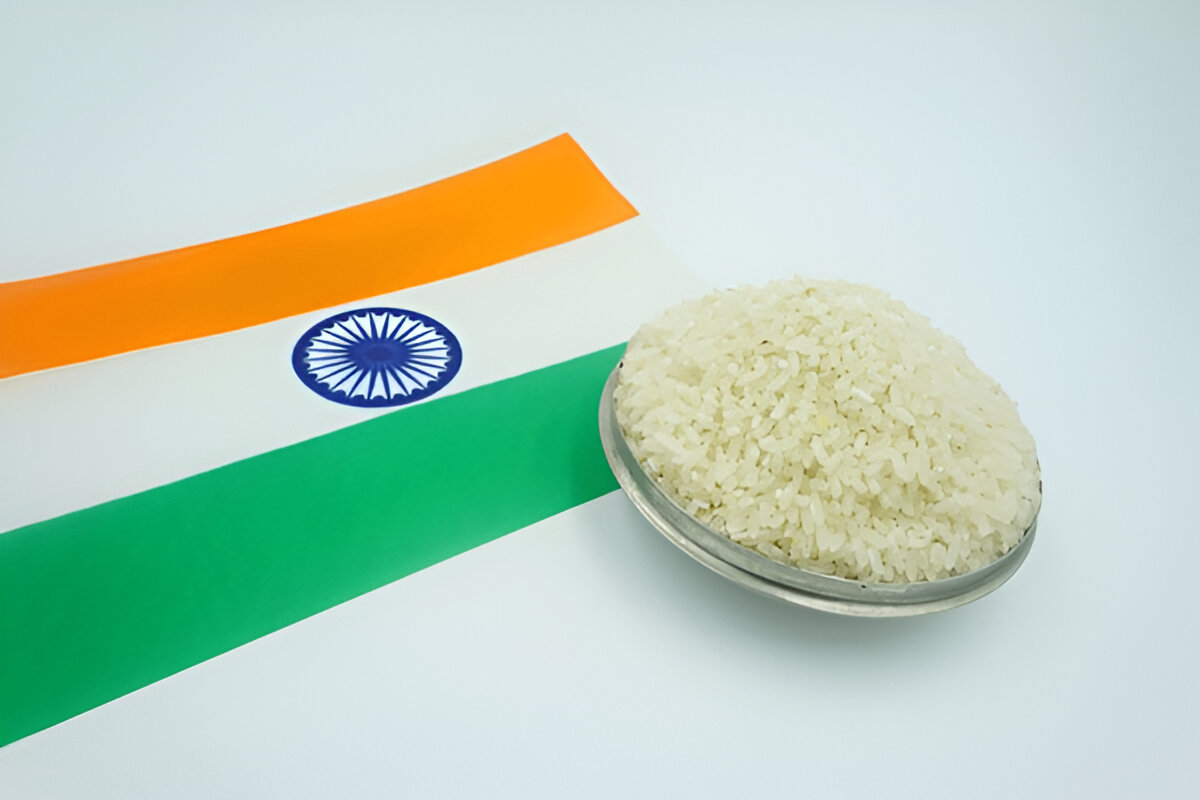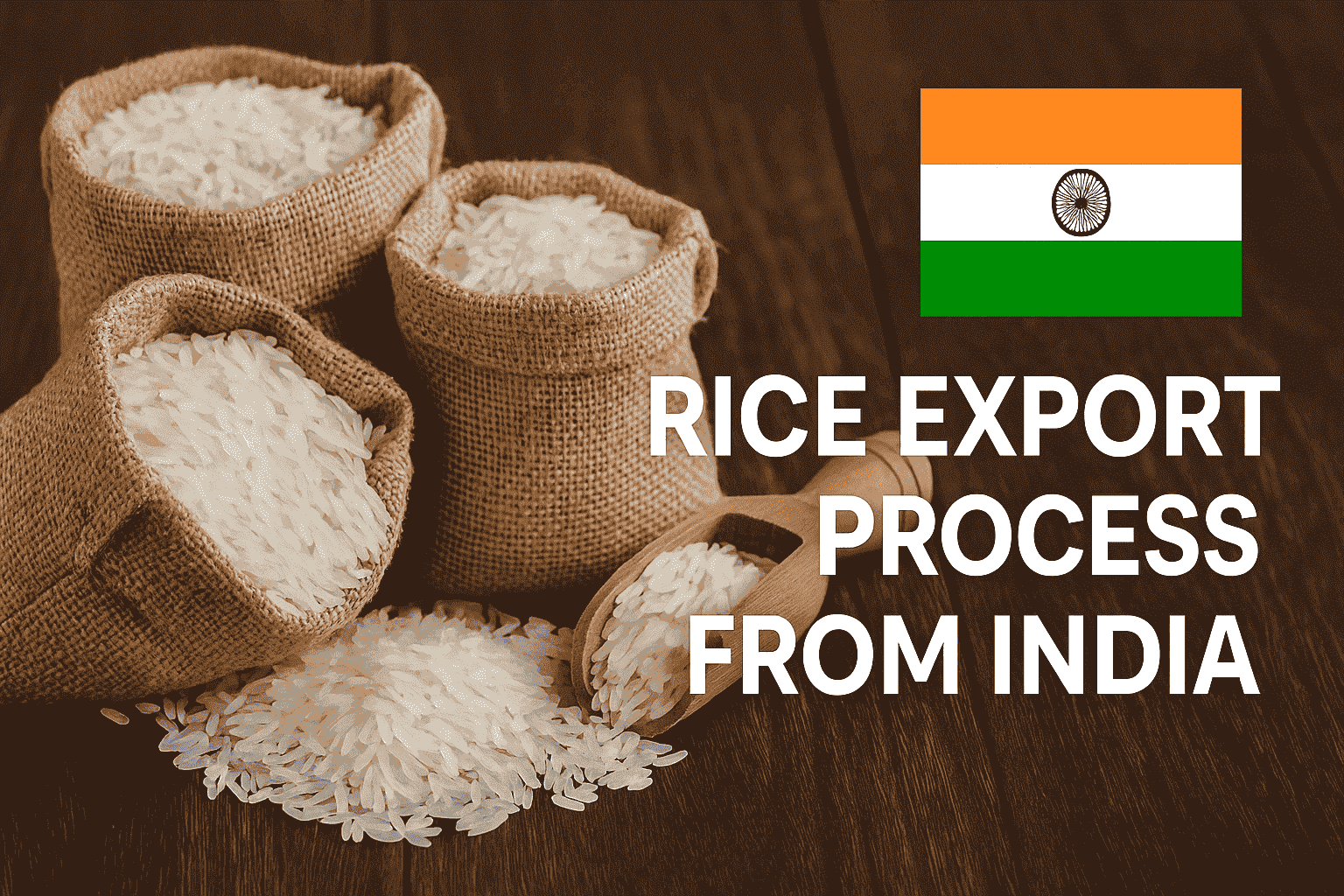


India is one of the largest exporters of rice in the world, delivering premium-quality varieties like 1121 Steam Basmati Rice, PR 11/14 Golden Sella Basmati Rice, and IR 64 Parboiled Rice. Wondering how to export rice from India? This complete guide covers licenses, export documentation, logistics, and strategies to grow your rice export business in 2025.
The backbone of India’s agricultural economy lies in its robust rice industry. Moreover, the exports of rice from India, both Basmati and non-Basmati, meet high international demand due to consistent quality and global trust in Indian rice. Countries across Asia, Europe, and the Middle East import millions of tonnes each year.
It is important to understand the entire rice export process from India, including legal steps, FSSAI norms, APEDA registration, and international compliance. In addition, this guide will help you start rice export from India successfully and profitably in 2025.

The following steps constitute the rice Export Process from India:
Source high-quality rice like 1121 Steam Basmati Rice or PR 11/14 Golden Sella Basmati Rice from trusted suppliers.
Ensure the rice meets Indian and global quality standards before exporting.
Package the rice as per international guidelines and label it correctly.
Collect all necessary export documents to comply with regulations.
Choose the best shipping method and collaborate with a reliable logistics company.

Before diving into exports, you need to know the types of rice exported from India:
Since India’s major export markets include the Middle East, Europe, and North America, there is tremendous demand for quality Basmati rice.
The export process involves a series of stages that start from sourcing and quality control to shipping and documentation. Evaluate the intricacies of rice exporting and riding high on the demand for Indian rice on the global market with this guide.
To start exporting rice from India, you should complete the subsequent registrations:
Because certified rice satisfies worldwide standards for food safety and quality, buyers choose it. To guarantee the highest quality, exporters had to acquire:
Compliance with ISO 22000 certification guarantees food safety management.
Hazard analysis and important control points for food safety are aided by HACCP certification.
To avoid insect infestation, rice exports must have a phytosanitary certificate.
A Certificate of Origin (COO) attests to the product's provenance and authenticity.

The process of securing buyers is crucial to rice exports. In addition, here are some tips for finding potential clients:
To export your goods, you will be required to complete the following export documentation process:
Details of the rice shipment.
Provides details regarding weight, packing type, and product specifications.
Proof that your shipment was made.
Ensures that the rice is pest-free.
May qualify for duty exemption in certain countries.

Choosing the best shipping rice export method depends on the order size and destination:
Efficiently assist your logistics partner with customs clearance and warehouse management.
You need to set a price right if you want a company to stay competitive on the global market. Also, consider the following factors:
Export of Rice is subject to the risks as below:
To minimize these risks, you need to involve trade experts, freight forwarders, and financial advisors.
The government of India provides different incentives to rice exporters:
Refunds customs duty on exported goods.
Provides financial incentives based on export volume.
Offers protection against payment defaults.
Exporting rice from India is a lucrative opportunity, especially with high-demand varieties like 1121 Steam Basmati Rice and PR 11/14 Golden Sella Basmati Rice. In addition, it is important to understand the export process following rules and target the right markets to establish a successful rice export business.
Whether you export premium Basmati rice or affordable non-Basmati rice, quality, stability, and strategic planning are the keys to success. Start your journey today and take advantage of the global demand for Indian rice!
Shah Enterprises is among the top rice exporters in India, supplying premium Basmati and non-Basmati rice globally with a strong reputation for quality and trust.
Yes, rice can be exported from India. Exporters must comply with government regulations, obtain necessary licenses, and meet quality standards for international markets.
To export rice from India, you need an Importer Exporter Code (IEC) from DGFT, FSSAI registration, and compliance with APEDA guidelines.
1121 Basmati Rice, 1509 Basmati, and IR 64 Parboiled Rice are highly demanded globally due to their aroma, grain length, and quality ideal for rice exports.
Basmati rice, especially 1121 and 1509 varieties, is in high demand in India for its aroma and taste, followed by regional staples like Sona Masoori and Swarna.
1121 Basmati Rice is considered the No. 1 rice in India for its premium quality, long grain, and high international demand, especially in the Middle East and Europe.